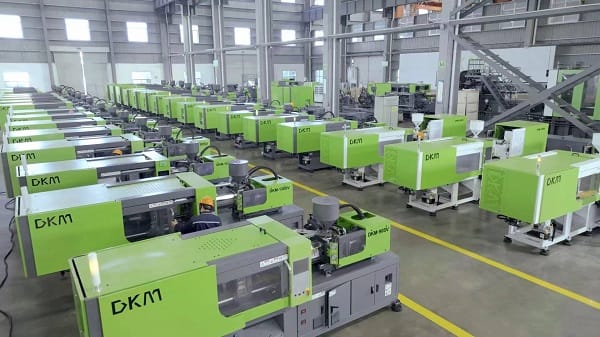Why Injection Molding is the Backbone of Modern Production
In the world of industrial manufacturing, efficiency, precision, and scalability determine the success of production. Among the various manufacturing techniques, 사출 성형 stands out as a revolutionary process that has reshaped the production of plastic components across industries. From automotive to electronics, medical devices to consumer goods, Injection Molding offers unparalleled benefits that make it the preferred choice for mass production.
Unmatched Precision and Consistency
One of the most significant advantages of Injection Molding is its ability to produce highly precise and consistent parts. Unlike traditional manufacturing methods, which may suffer from variations and defects, Injection Molding ensures that every piece maintains strict dimensional accuracy.
High Tolerance Levels: The process achieves tolerances as low as ±0.005 inches, making it ideal for industries that require precision, such as aerospace and medical device manufacturing.
Reproducibility: Once the mold is created, thousands to millions of identical components can be produced with minimal deviation.
Complex Geometry: Intricate designs, undercuts, and detailed patterns can be accurately replicated without compromising structural integrity.
High Efficiency and Mass Production Capabilities
For industries that demand high-volume production, Injection Molding is the gold standard. The process is optimized for rapid cycle times and high output, making it significantly more efficient than other manufacturing techniques.
Fast Production Cycles: Depending on the complexity of the part, cycle times can range from a few seconds to under a minute, allowing for large-scale production in minimal time.
Minimal Waste: Modern Injection Molding systems optimize material use, reducing excess and scrap production. Many facilities incorporate regrinding and recycling, ensuring sustainability in operations.
Automation Integration: With robotic handling and automated quality control, Injection Molding minimizes labor costs while increasing production speed and accuracy.

Material Versatility: A Wide Range of Applications
Injection Molding is compatible with a diverse range of materials, each catering to specific industrial needs.
Thermoplastics: Such as ABS, Polycarbonate, Nylon, and Polypropylene, known for their durability, chemical resistance, and lightweight properties.
Thermosetting Plastics: Used in high-heat applications, these materials maintain structural integrity even under extreme conditions.
Elastomers & Silicone: Essential for medical-grade applications and consumer products that require flexibility and resilience.
Filled & Reinforced Plastics: Incorporating fiberglass or carbon fiber enhances strength and performance for demanding industrial applications.
Cost Efficiency: Lowering Production Costs at Scale
While initial mold creation costs may be high, Injection Molding proves cost-effective in mass production.
Low Per-Unit Cost: Once the mold is produced, each unit becomes significantly cheaper compared to other methods.
Reduced Assembly Costs: Complex parts can be molded as a single unit, eliminating the need for additional assembly or secondary processes.
Energy Efficiency: Advanced electric and hybrid injection molding machines consume less energy, lowering operational expenses.
Superior Strength and Durability
Modern Injection Molding techniques allow for reinforced plastics, ensuring that final products meet strict durability requirements.
Enhanced Structural Integrity: Molded parts can be reinforced with additives like glass fiber to improve mechanical strength.
Weight Reduction: Industrial applications benefit from lightweight yet durable materials, reducing overall product weight without compromising durability.
Chemical & Heat Resistance: Special formulations resist corrosion, extreme temperatures, and exposure to harsh chemicals, making them ideal for automotive, medical, and industrial applications.
Sustainability: A Step Towards Green Manufacturing
Environmental concerns are at the forefront of modern manufacturing, and Injection Molding is evolving to meet these demands.
Recyclability: Many thermoplastic materials used in Injection Molding are fully recyclable, allowing for eco-friendly production cycles.
Reduced Carbon Footprint: Energy-efficient molding machines and optimized production reduce emissions and waste.
Biodegradable & Bioplastic Options: The industry is shifting towards sustainable materials, reducing dependency on fossil-fuel-based plastics.
Customization & Innovation in Industrial Design
With advancements in Injection Molding, manufacturers can push the boundaries of design and functionality.
Multi-Material Molding: Allows for different plastics or composite materials to be molded into a single part, enhancing product performance.
Overmolding & Insert Molding: These techniques enable seamless integration of different materials, improving grip, texture, and durability.
Color & Aesthetic Flexibility: Custom pigmentation and surface textures eliminate the need for additional painting or finishing.
Applications Across Key Industries
The impact of Injection Molding extends across multiple industrial sectors, reinforcing its significance in modern manufacturing.
Automotive Industry
Production of lightweight yet durable components such as dashboards, bumpers, and interior panels.
Enhanced fuel efficiency due to weight reduction in structural parts.
Use of high-performance materials for electrical and safety components.
Medical & Healthcare
Production of sterile, biocompatible components such as syringes, implants, and diagnostic devices.
Consistency and precision in parts that require high tolerances.
Compliance with strict FDA and ISO standards for medical-grade plastics.
소비자 가전
Manufacturing of durable and aesthetically pleasing casings for smartphones, laptops, and wearable devices.
Integration of high-performance thermoplastics for heat resistance and impact durability.
Efficient large-scale production to meet high consumer demand.
Aerospace & Defense
Lightweight yet strong polymer components reducing overall aircraft weight.
High-performance materials resistant to extreme temperatures and pressure conditions.
Advanced design capabilities for complex parts in military applications.
The Future of Injection Molding in Industrial Production
Injection Molding has proven itself as a dominant force in modern manufacturing. Its ability to deliver high-precision, cost-effective, and scalable solutions makes it indispensable across industries. With ongoing advancements in materials, automation, and sustainability, Injection Molding will continue to shape the future of industrial production. Businesses that leverage this technology gain a competitive edge in efficiency, quality, and innovation, solidifying their place in the evolving global market.
